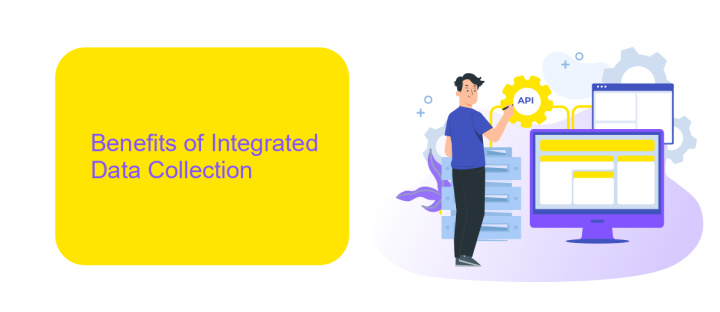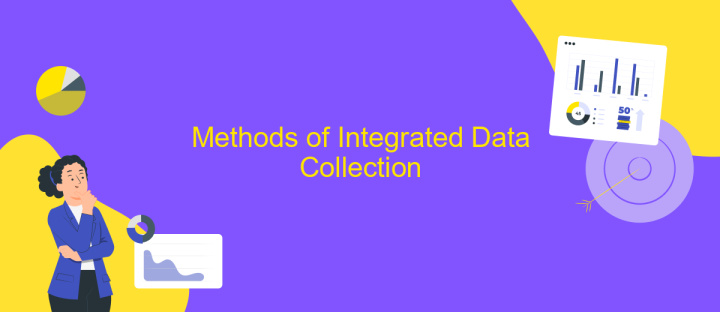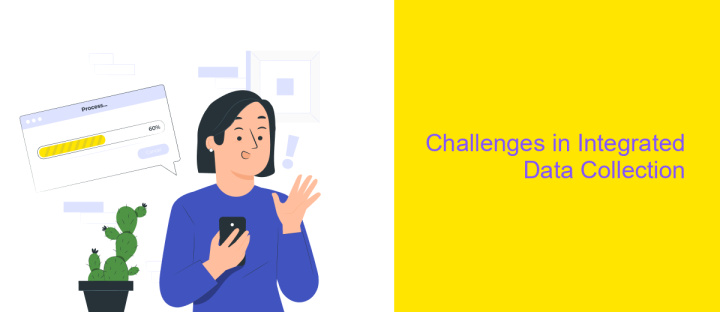Integration Data Collection
In today's interconnected world, the ability to seamlessly integrate data from diverse sources is crucial for informed decision-making and operational efficiency. Integration data collection involves the systematic gathering and unification of data from various platforms, ensuring accuracy and consistency. This article explores the methodologies, benefits, and challenges associated with integration data collection, highlighting its importance in driving business intelligence and strategic planning.
Introduction
Integration data collection is a crucial process in modern data management, enabling organizations to gather, consolidate, and analyze data from various sources efficiently. This approach helps in creating a unified view of information, facilitating better decision-making and operational efficiency. The integration of data collection processes ensures that data is accurate, timely, and relevant, which is essential in today's fast-paced business environment.
- Improved data accuracy and consistency
- Enhanced data accessibility and usability
- Streamlined data management processes
- Better decision-making capabilities
- Increased operational efficiency
By leveraging integration data collection, organizations can overcome the challenges of disparate data sources and fragmented information. This method not only simplifies the data management process but also supports the development of comprehensive insights. Ultimately, integration data collection is a foundational element for achieving a competitive edge in the data-driven world.
Benefits of Integrated Data Collection

Integrated data collection offers numerous benefits that streamline operations and enhance decision-making processes. By consolidating data from various sources into a unified system, organizations can achieve a comprehensive view of their operations. This holistic perspective enables more accurate and timely analysis, leading to better strategic decisions. Furthermore, integrated data collection reduces redundancy and minimizes errors, as data is entered once and used across multiple platforms, ensuring consistency and reliability.
Utilizing services like ApiX-Drive can significantly simplify the process of integrating data from diverse sources. ApiX-Drive allows seamless connections between various applications and platforms, automating data transfers and reducing manual workload. This not only saves time but also increases efficiency and accuracy. By leveraging such integration tools, organizations can focus more on analyzing data and deriving insights rather than spending valuable resources on data collection and management. Consequently, integrated data collection empowers businesses to be more agile, responsive, and competitive in today's fast-paced environment.
Methods of Integrated Data Collection

Integrated data collection is a crucial process that involves gathering data from various sources to create a comprehensive dataset. This method ensures that all relevant information is consolidated, providing a holistic view and enabling more accurate analysis. Several methods can be employed to achieve integrated data collection, each with its unique advantages and applications.
- Manual Data Entry: This involves the manual input of data from different sources into a single system. While time-consuming, it allows for careful validation and correction of data.
- Automated Data Integration: Utilizes software tools to automatically collect and merge data from various sources, ensuring efficiency and reducing the risk of human error.
- APIs (Application Programming Interfaces): APIs facilitate the seamless exchange of data between different systems, enabling real-time integration and updates.
- ETL (Extract, Transform, Load): A process that extracts data from multiple sources, transforms it into a suitable format, and loads it into a data warehouse for analysis.
Each method has its own set of strengths and is chosen based on the specific requirements of the data integration task. By employing these methods, organizations can ensure that their data is comprehensive, accurate, and ready for insightful analysis.
Challenges in Integrated Data Collection

Integrated data collection offers numerous benefits, but it also presents several challenges that organizations must address to ensure effective implementation. One major challenge is the complexity of integrating data from various sources, each with its own format and structure. This process often requires significant time and resources, as well as specialized expertise to manage and harmonize disparate datasets.
Another challenge is ensuring data quality and consistency. When data is collected from multiple sources, there is a higher risk of encountering duplicate, incomplete, or inaccurate information. This can lead to unreliable insights and decision-making, undermining the value of the integrated data.
- Data privacy and security concerns
- Scalability issues with increasing data volumes
- Maintaining real-time data synchronization
- High costs of integration tools and infrastructure
Addressing these challenges requires a strategic approach, including investing in advanced integration technologies, establishing robust data governance frameworks, and continuously monitoring and improving data quality. By proactively tackling these issues, organizations can maximize the benefits of integrated data collection and drive more informed decision-making.
Conclusion
In conclusion, integrating data collection processes is essential for optimizing business operations and making informed decisions. By streamlining data from multiple sources into a unified system, companies can enhance accuracy, reduce redundancy, and improve overall efficiency. The implementation of automated tools and platforms, such as ApiX-Drive, facilitates seamless integration, allowing businesses to connect various applications and services effortlessly. This not only saves time but also minimizes the risk of human error, ensuring that data is reliable and up-to-date.
Furthermore, the ability to customize and scale integration solutions to meet specific business needs is a significant advantage. ApiX-Drive, for instance, offers a user-friendly interface and a wide range of connectors, making it accessible for organizations of all sizes. As businesses continue to evolve, the importance of efficient data integration will only grow, underscoring the need for robust, scalable solutions that can adapt to changing requirements. By leveraging such tools, companies can stay competitive and drive growth in an increasingly data-driven world.
FAQ
What is Integration Data Collection?
Why is Integration Data Collection important?
How can I automate Integration Data Collection?
What challenges might I face with Integration Data Collection?
Is it possible to integrate data from both cloud-based and on-premises systems?
Strive to take your business to the next level, achieve your goals faster and more efficiently? Apix-Drive is your reliable assistant for these tasks. An online service and application connector will help you automate key business processes and get rid of the routine. You and your employees will free up time for important core tasks. Try Apix-Drive features for free to see the effectiveness of the online connector for yourself.

